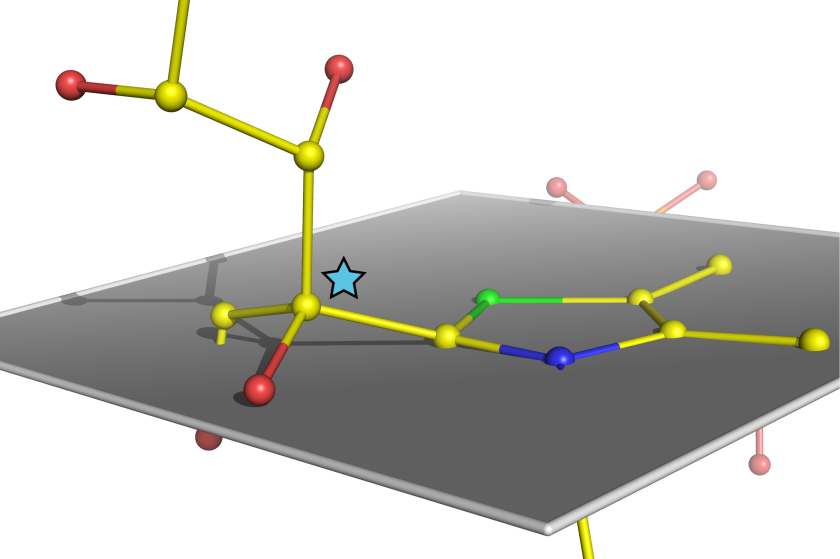Göttingen scientists use BESSY II to decode basic mechanism underlying biochemical reactions

Structure of the sugar molecule bound by the enzyme transketolase immediately prior to its being split
Enzymes are life’s molecular catalysts and figure prominently in cellular metabolism. It has been speculated that in the course of a biochemical reaction enzymes physically bend their substrates to split them. Now for the first time ever, scientists at the Göttingen Center for Molecular Biosciences (GZMB) have successfully used BESSY II's MX beamline to unequivocally confirm this hypothesis. The results from this study have been published in the renowned scientific journal Nature Chemistry.
The Göttingen team around Prof. Dr. Kai Tittmann and Prof. Dr. Ralf Ficner started out by growing high order protein crystals of the human enzyme transketolase, which plays a central role in human metabolism during sugar processing. Natural sugar substrates were added to the protein crystals. Analysis of the enzyme’s crystalline structure was subsequently performed at electron storage ring BESSY II's MX beamline and in French Grenoble. The scientists were able to determine the structure of the sugar molecule bound by the enzyme immediately prior to its being split in half at an ultrahigh spatial resolution of 0.1 nanometers. “The snapshot we got of an enzyme at work, which really is unprecedented in terms of resolution, unequivocally reveals how the sugar substrate is being bent by the enzyme, similar to a vise clamping a work piece,” Prof. Tittmann explains.
In many cases, enzymes are drug targets. Which is why these new insights are important for the development of customized, highly specific active substances like those used in cancer therapy. “Even the human transketolase used in this study plays a key role in cancer cell metabolism,” says Prof. Tittmann.
Source: Göttingen University
https://www.helmholtz-berlin.de/pubbin/news_seite?nid=13800;sprache=en
- Copy link
-
Ernst Eckhard Koch Prize and Innovation Award on Synchrotron Radiation 2025
At the 27th BESSY@HZB User Meeting, the Friends of HZB honoured the dissertation of Dr Enggar Pramanto Wibowo (Friedrich-Alexander University Erlangen-Nuremberg). The Innovation Award on Synchrotron Radiation 2025 went to Prof. Tim Salditt (Georg-August-University Göttingen) and Professors Danny D. Jonigk and Maximilian Ackermann (both, University Hospital of RWTH Aachen University).
-
Synchrotron radiation sources: toolboxes for quantum technologies
Synchrotron radiation sources generate highly brilliant light pulses, ranging from infrared to hard X-rays, which can be used to gain deep insights into complex materials. An international team has now published an overview on synchrotron methods for the further development of quantum materials and technologies in the journal Advanced Functional Materials: Using concrete examples, they show how these unique tools can help to unlock the potential of quantum technologies such as quantum computing, overcome production barriers and pave the way for future breakthroughs.
-
Peat as a sustainable precursor for fuel cell catalyst materials
Iron-nitrogen-carbon catalysts have the potential to replace the more expensive platinum catalysts currently used in fuel cells. This is shown by a study conducted by researchers from the Helmholtz-Zentrum Berlin (HZB), Physikalisch-Technische Bundesanstalt (PTB) and universities in Tartu and Tallinn, Estonia. At BESSY II, the team observed the formation of complex microstructures within various samples. They then analysed which structural parameters were particularly important for fostering the preferred electrochemical reactions. The raw material for such catalysts is well decomposed peat.
